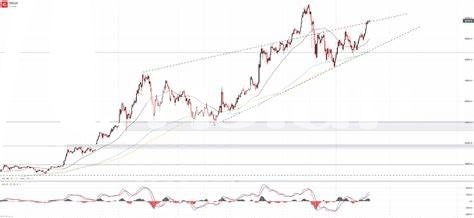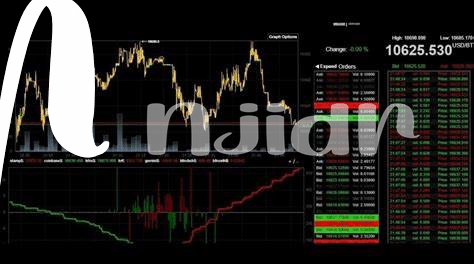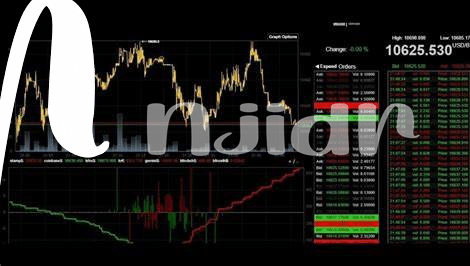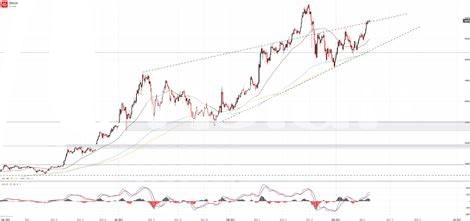What Makes Bitcoin Swing Like a Pendulum? 🌪️

Imagine a playground swing, constantly moving back and forth; that’s quite similar to how Bitcoin behaves in the financial world. Several factors contribute to this continuous swing, making it unpredictable. Just like the weather can change suddenly, so can the value of Bitcoin, mainly because it operates in a digital realm where a lot of different elements come into play. From big news breaking out to sudden changes in how people feel about it, Bitcoin’s value can soar high or dive deep within hours or even minutes. It’s a dance of numbers and sentiments, all intertwined.
| Cause | Effect on Bitcoin |
|---|---|
| Market Sentiment | 📉📈 Drives sudden spikes or drops |
| News and Events | 🌪️ Can cause turbulence |
| Global Economy | 🌐 Influences overall direction |
For one, big headlines can either make people rush to buy Bitcoin, pushing the price up, or scare them into selling, which drops the price. It’s a bit like being in a boat on the high seas, where news is the wind either filling the sails to push it forward or causing a storm that rocks the boat. Then, there are the big players, sometimes called “whales,” who own a lot of Bitcoin. When they decide to buy or sell, their moves can cause big waves in the Bitcoin pool, making the price swing dramatically. Amidst all this, understanding why and how these swings happen can make navigating the Bitcoin market a bit less daunting.
The Influence of News on Bitcoin’s Rollercoaster 🗞️
Imagine waking up to news that can make your heart skip a beat, especially if you’re into Bitcoin. 🗞️ It’s like watching a suspense movie, but you’re both the audience and a character in it. When a big announcement hits the web—say, a country embraces or shuns Bitcoin—waves are felt across the globe in the form of price jumps or drops. It’s not just the official news; even rumors can make Bitcoin dance. Picture a famous person tweeting their love or skepticism about Bitcoin. Suddenly, everyone’s watching, and the digital currency’s value reacts as if it’s alive. But here’s where it gets even more intriguing: each piece of news feeds into the traders’ decisions, creating a cycle of reaction that keeps the market perpetually vibrant. Understanding this relationship between news and Bitcoin’s value can be a game-changer. It’s like having a compass in a storm. And speaking of navigation, for those looking to dive deeper into the ever-evolving world of cryptocurrencies, exploring opportunities and challenges in significant updates, check out https://wikicrypto.news/navigating-the-ethereum-merge-opportunities-and-challenges-ahead. This dynamic landscape is continuously shaped by developments that could either present new possibilities or demand cautious navigation.
The Big Players: How They Move Bitcoin’s Price 🐘

Imagine a playground seesaw: when one side goes up, the other goes down. This is similar to what happens in the Bitcoin market, and the ones sitting on either side of this seesaw are often the “big players.” These are the individuals or companies with lots of Bitcoins. When they decide to buy more, their demand can push the price up, just like adding weight to one side of the seesaw. On the flip side, when they sell a large number of Bitcoins, it’s like suddenly jumping off the seesaw – the price can take a dive. This movement isn’t just about their actions alone; it’s also about the ripple effect. 🌊 Other traders see these big moves and react, either by following in their footsteps or by trying to anticipate the next shift. It’s a fascinating dance of actions and reactions, making the Bitcoin market a place of high drama and unexpected turns. The influence of these whales, as they’re sometimes called, isn’t always about what they do but how others perceive their moves. It turns the market into a complex web of decisions, where understanding the giants’ steps could give you an edge. 🐾
Social Media Buzz and Bitcoin: a Love Story 💞

Imagine Bitcoin and social media sitting in a tree, K-I-S-S-I-N-G! Sounds funny, right? But in many ways, it’s how things are between the two. Picture this: when someone influential tweets, shares, or posts something positive about Bitcoin, it’s like a wave of excitement rushes through the internet. This excitement turns into a buzz, and just like bees to honey, people swarm to buy Bitcoin. The result? The price of Bitcoin goes up 🚀. But, the coin has two sides. Negative posts can cause panic, making people sell their Bitcoin, leading to a price drop 📉. It’s a bit like a high school relationship, full of ups and downs based on what’s being said on social media. The key players aren’t just experts or CEOs but include celebrities and influencers whose words carry weight. They can, with just a tweet, make the heart of Bitcoin’s market skip a beat. For enthusiasts wanting to stay ahead in this love story, keeping an eye on social media is crucial. And for those looking deeply into cryptocurrency trends and updates, including impacts from social media buzz on digital currencies like Bitcoin, visiting cardano news can be really helpful. It’s like having a secret map in the vast ocean of cryptocurrency information. Remember, in the dynamic world of Bitcoin, social media buzz acts as both its cheerleader and critic, driving the beat to which this digital currency dances.
Understanding Supply and Demand in the Bitcoin World 📈
Imagine walking into a marketplace where everyone’s buzzing around, trying to buy or sell shiny digital coins called Bitcoin. 🐝 In this bustling market, the number of coins available (supply) and how much people want them (demand) are always changing. Think of it like your favorite limited-edition sneakers: if there aren’t many pairs left but everyone wants them, their price skyrockets. On the flip side, if suddenly everyone decides to sell their sneakers at the same time, the price drops because there are so many available. In the Bitcoin world, things like new technology, changes in regulations, or even tweets from famous folks can make everyone want to buy or sell all at once. 📱 It’s this dance between how many bitcoins are available and how much people want them that makes Bitcoin’s price move up and down. Real-time data lets us see this dance as it happens, helping us understand when it might be a good time to buy or sell, just like checking the weather before heading out. 🌦️
| Factor | Effect on Supply | Effect on Demand |
|---|---|---|
| New technology | Might increase | Raises interest |
| Regulations | Can limit supply | May decrease |
| Celebrity tweets | Largely unaffected | Spikes dramatically |
Real-time Data: Your Compass in the Bitcoin Storm 🧭

In the fast-paced world of Bitcoin, staying updated with the latest swings can feel like navigating through a storm without a compass. Real-time data becomes that much-needed compass, offering clarity amidst the chaos. Imagine being at sea; the waves are the price changes, and the wind direction is the market sentiment. By having access to up-to-the-minute data, you’re equipped with a map and a compass, enabling you to make informed decisions rather than relying on guesswork or outdated information. It’s like having a bird’s-eye view of the market, where every movement is visible, and no change goes unnoticed.
Moreover, for those looking to broaden their horizon beyond Bitcoin, staying updated on related markets is equally important. This is where accessing the latest news becomes invaluable. For instance, keeping an eye on Ethereum updates can offer insights into the broader cryptocurrency landscape. If you’re considering expanding your portfolio, check out the best ethereum seller for the most recent Ethereum news and trends. By integrating real-time Bitcoin data with insights from the wider crypto world, you create a robust strategy that can weather any storm. 🌐💡🛠
